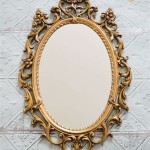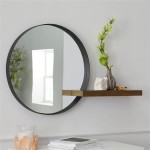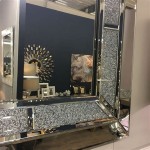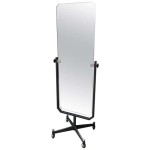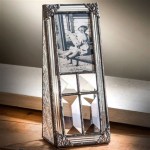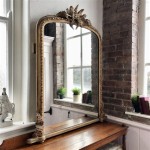Why Concave Mirrors Are Used in Searchlights
Searchlights, powerful beams of light used for various purposes such as illuminating large areas, signaling, and defense, rely on the unique properties of concave mirrors to achieve their effectiveness. Concave mirrors, characterized by their inwardly curved reflecting surface, possess a fascinating interplay of light reflection that makes them indispensable components of searchlights. This article delves into the reasons why concave mirrors are the preferred choice for constructing searchlights, explaining the scientific principles behind their operation.
1. Focusing Light into a Parallel Beam
One of the primary reasons concave mirrors are used in searchlights is their ability to focus light into a parallel beam. This property arises from the way concave mirrors reflect light rays. When parallel rays of light strike a concave mirror, they converge at a single point known as the focal point. Conversely, when a light source is placed at the focal point of a concave mirror, the reflected rays emerge as a parallel beam.
This ability to focus light into a parallel beam is crucial for searchlights because it allows the light to travel long distances without spreading out significantly. A parallel beam maintains its intensity over a greater distance, providing a clear and bright illumination even at considerable ranges. This is especially important for applications such as long-range signaling or illuminating objects at a distance.
Furthermore, the focused beam of a searchlight can be easily directed by rotating the mirror, allowing the operator to pinpoint specific areas or targets. The parallel nature of the beam ensures that the light remains concentrated and focused, even as the mirror's orientation changes. This directional control is essential for navigation, search and rescue operations, and other applications requiring precise beam direction.
2. Amplifying Light Intensity
Concave mirrors also play a crucial role in amplifying the intensity of the light source in a searchlight. The converging nature of concave mirrors allows them to concentrate the light rays from a source, effectively increasing the brightness of the beam. This intensification is achieved through the principle of reflection, where the mirror reflects the light rays from the source towards a single point.
The greater the curvature of the concave mirror, the closer the focal point is to the mirror's surface. As a result, the light rays are concentrated into a smaller area, resulting in a brighter and more intense beam. This amplified light intensity is essential for searchlights, enabling them to illuminate objects at a distance or pierce through darkness, overcoming atmospheric scattering and absorption.
3. Versatility in Design and Applications
Concave mirrors exhibit versatility in their design and applications, making them adaptable to various searchlight requirements. The shape and size of the concave mirror can be adjusted to achieve different focal lengths and beam widths, enabling optimization for specific applications. For example, searchlights designed for long-range illumination often employ large concave mirrors with longer focal lengths, producing a narrower and more focused beam. Conversely, searchlights used for close-range illumination may utilize smaller concave mirrors with shorter focal lengths, generating a wider and less intense beam.
Furthermore, the materials used to construct concave mirrors can be tailored to specific needs. Reflective coatings of aluminum, silver, or gold can be applied to the mirror's surface to enhance reflectivity and light transmission, maximizing the efficiency of the searchlight. The choice of material depends on factors such as the desired wavelength of light, environmental conditions, and cost considerations.
In conclusion, the unique properties of concave mirrors, including their ability to focus light into a parallel beam, amplify light intensity, and offer design versatility, make them the ideal choice for constructing searchlights. The principle of reflection, combined with the specific curvature and material properties of concave mirrors, allows searchlights to illuminate objects effectively, even at great distances. As such, concave mirrors remain an integral component of searchlights, enabling a wide range of applications, from illuminating large areas to navigating through darkness.

How A Concave Mirror Is Used In Headlights And Searchlights To Throw Light At Long Distance Homework Study Com

Which Mirror Is Used In The Searchlights A Concaveb Convexc Planed Plano Convex
What Is A Concave Mirror In Searchlight Quora

With The Help Of A Proper Ray Diagram Explain How Concave Mirror Is Useful In Searchlights Brainly
Where Are Concave Mirrors Placed In A Torch Quora
Concave Mirror S Khan Academy
Why Do We Use A Concave Mirror In Car Headlights Quora

Uses And S Of Concave Mirror
What Is A Concave Mirror In Searchlight Quora

The Mirrors Used In Search Lights Are Parabolic Explain Brainly

